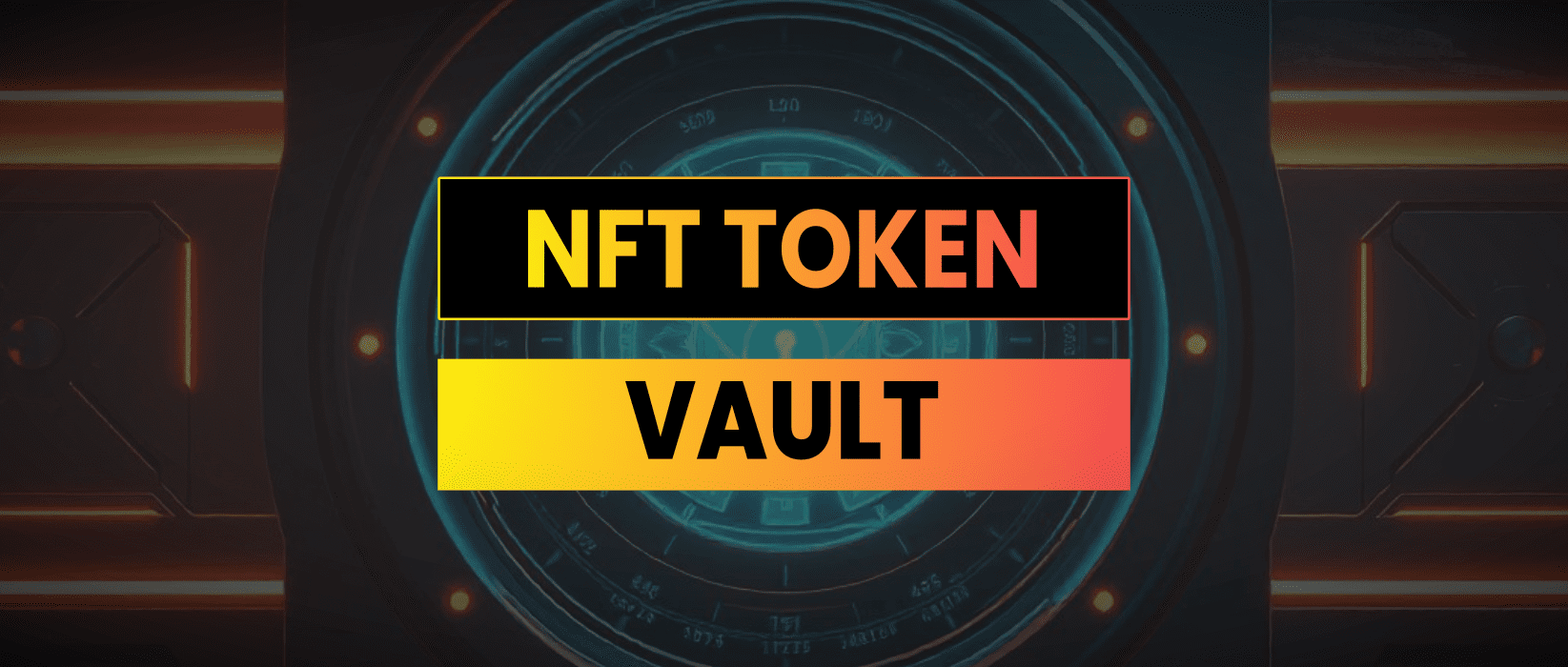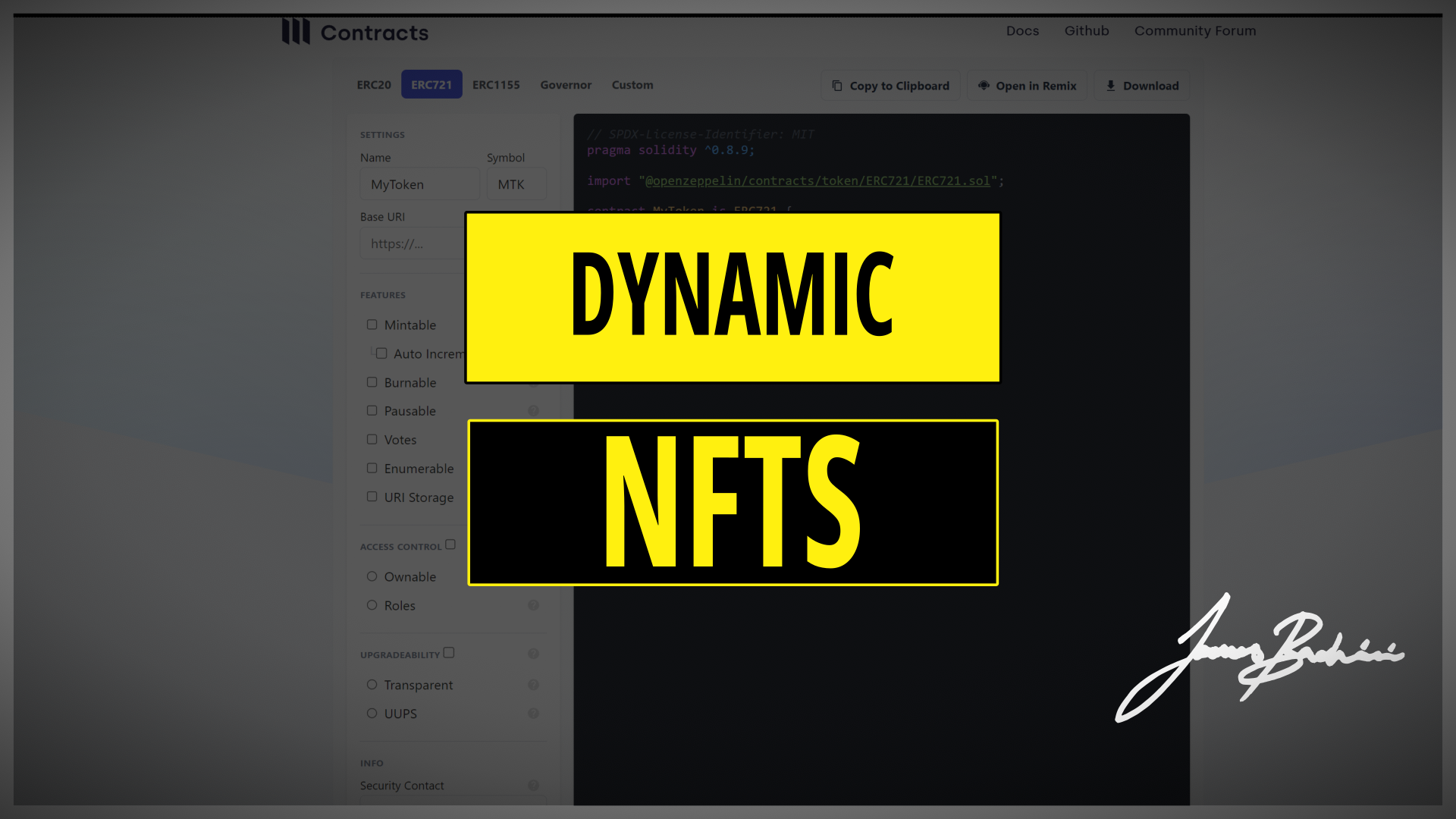Solidity
-

Solang | Writing Solidity Contracts For Stellar
Solidity developers now have a new doorway into the Stellar universe. The Solang compiler suite offers Solidity across the border into Soroban’s Wasm-powered smart-contract landscape. This tutorial distills everything you need to know right now: what Solang supports, how it differs from traditional EVM Solidity, and how you can write, compile, and deploy your first…
-

Hello World In Solidity
Your first smart contract deployment represents a fundamental shift in how you think about software. Unlike traditional applications that run on centralized servers, smart contracts execute on a distributed network of thousands of computers worldwide. Once deployed, your code becomes permanent, transparent, and permissionless. This immutability creates both opportunity and responsibility. Smart contracts have facilitated…
-

Best Practices for Storing Large Data in Solidity
Blockchain storage is limited and block space is therefore expensive, especially at times of peak congestion. Solidity developers must employ strategies to optimise data storage whilst maintaining the integrity and accessibility of their smart contracts. One of the most effective approaches is to leverage off-chain storage solutions. Instead of storing large data sets directly on…
-

Understanding The Fallback & Receive Functions In Solidity
Among Solidity’s essential features are the fallback and receive functions, which play crucial roles in handling Ether transactions and contract interactions. A thorough understanding of these functions is vital for developers aiming to create robust and secure smart contracts. The Fallback Function In Solidity, the fallback function is a unique, unnamed function that executes under…
-

Optimizing Smart Contracts For Layer 2 Chains
Layer 2 solutions have emerged as a crucial component in addressing scalability issues. Optimising smart contracts for these Layer 2 chains is essential to harness their full potential. This article explores key considerations for developers working with Layer 2 solutions, focusing on cross-chain interoperability, gas fees, and frontend considerations. Cross-Chain Interoperability When optimising smart contracts…
-

Creating Custom Solidity Libraries For Reusable Code
Solidity libraries enable blockchain developers to create modular reusable code. This shared usage avoids duplicating code, saves gas during deployment and promotes consistency within a code base. Let’s create a basic library that demonstrates how this works: This code defines a simple smart contract that utilises a library for basic arithmetic operations. The MyMath library…
-

Building Smart Contract Event Filtering Systems for DApps
How events work in web3 Events in Web3 act as logs of significant occurrences within a smart contract. When a specific function is executed, the smart contract can “emit” an event, signalling to external systems that something has happened. These emitted events are stored on the blockchain, but they do not modify the contract’s state.…
-

Automating Web3 Interactions In Rust | Minting Ethereum NFT’s With Ethers-rs
In this tutorial we are going to be deploying a simple NFT contract to Ethereum and then minting new NFT’s using a bot built with Rust and ethers-rs Let’s start by heading to Remix and deploying this contract to Ethereum’s Sepolia testnet. It has already been deployed here if you want to skip this step:…
-

Building A Cross Chain Token Bridge With LayerZero v2
This tutorial will guide you through the process of building a token bridge using LayerZero v2, specifically employing the OFTAdapter on mainnet and the OFT.sol contract on all other chains. We’ll cover the setup and deployment workflow, ensuring you have a comprehensive understanding of the process. Before we delve into the deployment process, it’s crucial…
-

Practical Applications Of Merkle Trees
Merkle trees are a useful tool for blockchain developers offering a myriad of benefits, chief among them being the efficient verification of large data sets and proof of inclusion. By leveraging Merkle trees developers can significantly optimise gas costs and enhance the overall performance of their decentralised applications. In this article we will look at…
-

Implementing RBAC Patterns in Solidity
We can implement role based access control or RBAC patterns in Solidity using OpenZeppelin’s AccessControl.sol library. This allows developers to manage different roles and assign permissions dynamically. Here’s a step by step guide based on the information provided. Understanding Roles in Access Control The essence of RBAC in Solidity involves defining roles, where each role…
-

Creating MultiSig Wallets with Solidity
MultiSig wallets have become increasingly popular due to their enhanced security features. In this article, we will delve into the key components of a MultiSig wallet, how to write a MultiSig wallet contract using Solidity, deploying the wallet, and handling deposits and withdrawals. Note that the code provided here is for educational purposes only. If…
-

Prediction Markets Solidity
Prediction markets are decentralized platforms where participants can bet on the outcome of future events. For example, people could bet on the outcome of a presidential election or a sports game. In this tutorial, we will walk through a smart contract built on Ethereum, which allows users to create and participate in prediction markets. The…
-

Encrypting Private Keys in .env
It has become very normalised to store Ethereum private keys in plain text within .env files. While this is convenient, it’s a disaster waiting to happen when working in production with wallets that contain real funds. Today, I’ll show you a better way to manage your hot wallet keys using AES encryption. Full code for…
-

Balancer v3 Hooks
For the Balancer v3 Hookathon (yep it’s a hackathon to create DeX hooks) I had the idea to try and create a fair launch memecoin platform. It’s the kind of thing that could bring utility to the ecosystem as we’ve seen recently with the wave of memecoin trading on Solana. The target is to create…
-

Understanding ABI Encoding: A Guide to abi.encodeCall and encodeWithSelector
What Is ABI Encoding Application Binary Interface (ABI) encoding is a crucial concept in Ethereum smart contract development. It serves as a standardised method for encoding function calls and data, enabling seamless communication between different components of the Ethereum ecosystem. ABI encoding ensures that data is consistently formatted and interpreted across various platforms and programming…
-

Enums In Solidity
Enums are one of the most useful and underused data types in Solidity. I think because they aren’t widely used in Javascript and web dev, they often get overlooked in contract development. In this article I’ll make my case for why enums deserve a place in your tool kit and smart contracts. Enums in Solidity…
-

Pump.fun Clone In Solidity
Pump.fun is a token factory that lets users create and trade memecoins on Solana with dynamic pricing along a bonding curve. In this article I’ll show how I went about converting this concept to Solidity and deploying it on Ethereum. Full code for this is open source at: https://github.com/jamesbachini/Pump.sol Token Factory Contract At the core…
-

Creating Your Own Oracle Solidity & NodeJS
In this tutorial I’m going to go through the steps to setting up your own oracle service to bring data on-chain. We are going to be deploying a simple smart contract, then setting up a NodeJS client to fetch the price of Bitcoin, then uploading this to the contract. Full code for this is open…
-

How To Calculate Gas Costs For Solidity Contracts
Deploying Solidity smart contracts can be expensive because the code needs to be stored on the shared storage of a decentralized peer to peer blockchain network. The dollar cost of deploying Solidity smart contracts is dependent on a number of variables: I’ve previously provided code to analyze the bytecode size of contracts, you can also…
-

NFT Token Vault Solidity
This was inspired by the CryptoKitties WG0 token vault which accepts gen zero CryptoKitty deposits and mints 1 ERC20 token for each. Users can then buy tokens on exchange and claim NFT’s from the vault. The code is open source and available at: https://github.com/jamesbachini/NFTvault How The NFTvault Contract Works When you deposit your NFTs into…
-

Creating an UpOnly ERC20 Token
In this tutorial we are going to create a ponzi game in the form of an ERC20 token that has an internal marketplace function. The idea is to increase the price over time so that early buyers get to dump on late buyers at a higher price. The last buyer will have no liquidity to…
-

Solidity Encrypted Messaging dApp
This morning Pavel Durov, founder of Telegram, was arrested at a French airport for refusing to provide backdoor access to the messaging application. This tutorial will demonstrate how to use Elliptic Curve Diffie Hellman (ECDH) cryptography to establish a shared secret and encrypted messaging across a insecure communication channel, in this case a public blockchain.…
-

Script To Analyze Bytecode Size Of Smart Contracts
I was having trouble with the hardhat bytecode plugin so I wrote a little nodejs script which will print off the size of my compiled Solidity contracts. You’ll need nodejs installed and can then run it like this. You should get an ouput like this: Here’s the code to save to analyze_bytecode.js file in the…
-

Solidity Virtual Pet
Let’s create a virtual pet in Solidity and deploy it to the blockchain. Full frontend and contract code for this tutorial can be found here: https://github.com/jamesbachini/Solidity-Virtual-Pet Demo here: https://jamesbachini.com/misc/SolidityPet/index.html Smart Contract Our pet is going to have two attributes for hunger and happiness. Hunger should increase over time and happiness should have a mechanism where…
-

How To Check Token Balances Using Python
To check a wallet token balance on the Ethereum blockchain using Python you will need the following: Once we have our API key ready and Python installed we can install web3.py using the following command Now let’s create a file called balance.py and add the following code. Note the code is also available in the…
-

Building a Career in Web3
Web3 represents the future of the internet, where developers can deploy permissionless code on a decentralized network. Building a career in this space requires a combination of technical skills, practical experience, and a strategic approach. This article outlines the key steps for anyone looking to forge a career in Web3, from learning Solidity to launching…
-

Creating A Solidity Escrow Smart Contract
In this tutorial, we will create an Escrow contract using Solidity and deploy it to an Ethereum testnet. An Escrow contract is a financial agreement where a third party (the arbitrator) holds and regulates payment of the funds required for two parties involved in a given transaction. It helps make transactions more secure as it…
-

How To Create ERC404 Tokens Solidity Tutorial
An ERC404 token is a digital asset that combines the characteristics of ERC20 fungible tokens and ERC721 non-fungible tokens (aka NFT’s) to enable fractional ownership of an NFT. In essence, ERC404 tokens represent divisible parts of an NFT, allowing multiple individuals to own shares of a single NFT. This approach is designed to enhance the…
-

Sell Me This Pen.sol
What happens when you ask a blockchain developer to sell you a pen? Etch your words permanently on the Ethereum blockchain where they will outlive you & create an everlasting record of your thoughts, contemplations & predictions. This is your chance to leave an eternal mark and express your presence in the digital age while…
-

Solidity Proxy Contract Tutorial With Example Code
This Solidity proxy contract tutorial delves into the concept of upgradeable proxy contracts in Solidity, specifically utilizing OpenZeppelin’s proxy contract template. We’ll start with an understanding of how these contracts work, the compromise of immutable decentralization vs upgradeability and then dive into practical code examples. Proxy Contract Video Tutorial In this video I provide an…
-

Ethers-rs Tutorial | The Rust Web3 Library
In this tutorial we will be setting up a Rust script to connect to a smart contract on a blockchain network to display on-chain data using the ethers-rs library. James On YouTube Watch On YouTube: https://youtu.be/FA7WFGtyri8 |Subscribe Let’s start by setting up a new Rust project (you’ll need rust installed on your device and I’ll…
-

Asymmetry Finance | DeFi Analysis Report
Asymmetry Finance has emerged as a significant player in the liquid staking wars, offering an aggregated liquid staking token. This article explores the core functionalities of Asymmetry Finance and its core product safETH. This is a write up of my internal research notes, this is not a sponsored post and I do not hold any exposure…
-

OpenZeppelin 5 Solidity Common Errors
OpenZeppelin have just released version 5 of their Solidity smart contract libraries and there are some breaking changes that are going to cause errors. The two main ones are the Ownable.sol import which allows devs to create onlyOwner functions and the token hooks on ERC20, ERC721 & ERC1155 contracts. Ownable Constructor If you are getting…
-

Hardhat Solidity Tutorial
Hardhat is an extensive framework for developing, testing and deploying solidity smart contracts. In this Hardhat Solidity tutorial you will learn how to set it up, how to create hardhat unit test tricks, working with hardhat scripts and finally some Hardhat tips and tricks for Solidity developers. Hardhat Easy Setup Hardhat is built on NodeJS…
-

Celestia | Modular AppChains
Celestia is one of the most widely used scaling solutions for projects that need high throughput, cheap transactions on a dedicated decentralized public blockchain. The aim is for “developers to deploy their own blockchain as easy as deploying a new smart contract” This is a write up of my internal research notes, this is not…
-

Hardhat vs Foundry
I started developing solidity with Truffle, then moved to Hardhat, then moved to Foundry, then moved back to Hardhat before eventually settling using both on a regular basis. In this article I’ll talk about the benefits and disadvantages of Hardhat and Foundry so you can make an informed decision about which framework is better for…
-

The Essential Checklist For Deploying A New Token
In this article we are going to look at all the things that need doing when launching a new token to create a token deployment checklist for developers and founders. At the end there is a big list of all the token listing sites that you can submit your new token to. Unit Tests &…
-

Solidity Tutorial | Gas Paying NFT
The challenge is to create a NFT contract that charges 1 ETH to mint but then stores the entire amount as collateral in a liquid staking token. As staking rewards come in they get distributed to the holders of the NFTs. At any time a user can burn the NFT to reclaim the 1 ETH.…
-

Chainlink CCIP | Cross-Chain Interoperability Protocol
From all the announcements at ETHcc, the release of Chainlink CCIP as a direct competitor to LayerZero for cross-chain communications and bridging technology, is perhaps the most interesting. The inherent security risks associated with bridging technology means that Chainlink are in a good position to leverage their brand and security record to gain traction in…
-

Using Ethereum To Offset Bitcoin’s Carbon Footprint
Never have I sounded more like an Ethereum maxi, but there is a point beyond the provocative title. In this post I’m going to explore the potential for investors to use carbon credit tokens on Ethereum to offset the electrical consumption of BTC mining on their Bitcoin holdings. This novel idea provides the opportunity to…
-

A Close Look at PYUSD | Implications Of The PayPal Stablecoin
In August 2023 Paypal unveiled their new stablecoin, an ERC20 token built on Ethereum. The code is open source, the contract is verified on Etherscan, it’s a real token which is going to be available to Paypal’s 435m users. What Is pyUSD & How Does It Work The Paypal stablecoin was developed in partnership with…
-

How To Shuffle A Deck Of Cards In Solidity
In this post I explore how to simulate the shuffling of a deck of cards, addressing the challenges of randomness and predictability in a solidity smart contract environment where every input and output is part of the public record. Whether you’re looking to create an on-chain poker game, a collectible card game, or you’re simply…
-

Automate Solidity With MEV
There are no cron jobs in Solidity or native to the Ethereum blockchain. To automate Solidity code we can either use an external service/oracle or we can incentivise MEV searchers to complete tasks efficiently on our behalf. This type of Solidity automation is very common and used widely across liquidation systems which require reliable, fast,…
-

Solana SoLang Tutorial | How To Deploy Solidity On Solana
In this SoLang tutorial I’ll show you how to deploy Solidity code on Solana. We will start by setting up a dev environment before looking at some of the nuances in writing SoLang contracts. I’ll end on a few security considerations and a comparison to developing on Solana with SoLang vs Rust. Setting Up A…
-

Infura vs Alchemy
Most users connect to blockchains using RPC node services. This is sometimes taken care of in the background, for example Metamask uses Infura nodes to send and receive transactions. Web3 developers use custom RPC nodes for their deployment scripts and transactions. Operating the nodes requires a reliable infrastructure service, and two of the most popular…
-

Building LayerZero OFT Tokens In Solidity
LayerZero OFT tokens are a new standard for cross-chain assets. OFT’s (Omnichain Fungible Tokens) are not actually tokens themselves, but rather a set of instructions that tell LayerZero how to transfer tokens between different blockchains. In this tutorial we will be building a LayerZero OFT ERC20 token using Solidity and Remix. How LayerZero OFT Tokens…
-

XRP Legal Case | What It Means For Developers
In this article I’m going to be breaking down the document filed by judge Torres yesterday and consider what it means to developers working in the blockchain and web3 space. Highlights From The Ruling The full document is available here:https://www.nysd.uscourts.gov/sites/default/files/2023-07/SEC%20vs%20Ripple%207-13-23.pdf I’ve picked out some highlights Programmatic SalesHaving considered the economic reality of the Programmatic Sales,…
-

Uniswap v4 Hooks
Hooks in Uniswap v4 are external contracts that execute specific actions at certain points during the execution of a liquidity pool. These hooks provide flexibility and customization options for developers to create additional features for liquidity pools. Uniswap v4 hooks can be used to: A 3rd party developer can write a solidity hook contract with…
-

Solidity Error Codes | Not Always What They Seem
I get a lot of comments from Solidity tutorial videos and in Github issues asking how to resolve common solidity error codes. In this article I’ll go through some of the most frequent solidity issues, what they mean and how to resolve them. UNPREDICTABLE_GAS_LIMIT This is the most common and confusing error in Solidity The…
-

Lybra Finance | DeFi Analysis Report
Lybra Finance allows stETH stakers to mint the eUSD stablecoin which has a 7.2% APY. This is a write up of my internal research notes, this is not a sponsored post however I have purchased an allocation of LBR Lybra Finance’s governance token in my personal portfolio. Do your own research, not investment advice. Update…
-

Assessing Smart Contract Security Auditors
A smart contract audit can cost anything from $5,000-$250,000 USD. Within this range there is a wide range of services, some offer better value for money than others. In this article I will go through the options for founders looking to hire an auditor and some of the checks you can do to ensure you…
-

Ultimate Guide To Hire A Solidity/Web3 Developer
In this comprehensive guide, I will explore how to hire a Solidity/Web3 developer. Contractor, Partner or Employee The first thing you need to decide is whether you want to hire someone on a permanent basis or not. With Solidity development the contracts don’t tend to get updated once they are deployed so the bulk of…
-

How Wrapped Tokens Like wETH & wBTC Work
In this article we will look at how different wrapped tokens work and where the underlying collateral is stored. What Are Wrapped Tokens? Wrapped tokens are generally ERC20 tokens that represents another underlying asset, typically a cryptocurrency or real world asset. The purpose of wrapping a token is to enable its use within the DeFi…
-

3 Tips For Gas Efficient Solidity Smart Contracts
Here are 3 tips which could be considered the low hanging fruit of gas efficient solidity smart contracts. James On YouTube Watch On YouTube: https://youtu.be/xfNHzqkMWEQ |Subscribe Use Correct Modifiers & Declarations This is the simplest way to get some small wins with gas optimisation. Go through your contract and define anything that shouldn’t change as…
-

Introduction to Flash Loans | Unleashing Capital On Demand
In this tutorial on flash loans we will be creating a Solidity smart contract which takes a flash loan from Uniswap v3. This allows you to borrow huge amounts of capital with the catch that you have to pay it back in the same block or the whole transaction is reverted. James On YouTube Watch…
-

Uniswap Market Maker Bot | Managing Token Liquidity On Uniswap
In this tutorial I am going to go through how I built a market maker bot to manage liquidity on Uniswap v3 for a token pair. The idea is to create a automated trading bot which buys tokens when price falls below a base line value and sells tokens when price is above the base…
-

How To Create Your Own Memecoin With Solidity and Uniswap
In this tutorial we will be creating a permissionless, ERC20 memecoin and deploying it with a Uniswap v3 liquidity pool so users can buy it on the decentralized exchange. This tutorial is for demonstration purposes, don’t speculate on memecoins. James On YouTube Watch On YouTube: https://youtu.be/-bVzqtIa0bc |Subscribe The full source code for this is at:…
-

What is Pepe | A Memecoin Story
The Pepe memecoin is a cryptocurrency based on the Pepe the Frog meme, which originated on the imageboard website 4chan in 2005. The meme gained mainstream popularity in 2016 when it was adopted by supporters of then-presidential candidate Donald Trump. PepeToken is an ERC20 token on the Ethereum blockchain. It is widely traded across many…
-

Solidity vs Vyper
Solidity and Vyper are the two most popular programming languages for blockchain developers on Ethereum. Both of these languages have their own strengths and weaknesses which we will go through to help developers decide which is best suited for their project. Solidity Solidity is the most widely used programming language for developing smart contracts on…
-

Sign In With Ethereum Tutorial
To sign in with Ethereum using Metamask we will be using the ERC4361 specification that allows Ethereum accounts to authenticate with off-chain services using a standard message format. This technology offer users a self-custodial alternative to centralized identity providers that generally use email:password credentials. In Web3 applications we can improve user experiences and establish a…
-

Solidity Callback | Solidity Tips & Examples
A callback function in Solidity allows us to pass a function reference from one contract to another and have it execute as part of an atomic transaction. James On YouTube Watch On YouTube: https://youtu.be/pjm0eOelPXc |Subscribe Let’s first take a look at an example from the Solidity Snippets Github repo. Full code at: https://github.com/jamesbachini/Solidity-Snippets/blob/main/contracts/Callback.sol This code…
-

Strings in Solidity | Solidity Tips & Examples
A string in Solidity is a data type used to store text. Working with strings in Solidity can be challenging due to the limitations and efficiency required by the Ethereum virtual machine. This article aims to provide a comprehensive guide on how to use strings in Solidity, covering their properties, limitations, and best practices for…
-

Timestamp in Solidity | Solidity Tips & Examples
A timestamp is a numerical value that represents a specific moment in time. It’s often used to track when a certain event occurred or when a piece of data was created or modified. The most common way to represent a timestamp is by using the number of seconds that have elapsed since a specific moment…
-

Custom Error Handling in Solidity | Solidity Tips & Examples
Custom error handling enables Solidity developers to efficiently handle reverts and failed transactions including logging parameters. Let’s first take a look at an example from the Solidity Snippets Github repo: Note that the Solidity compiler version must be greater than 0.8.4 to use custom errors. Customer errors are supported by Etherscan and most other block…
-

Solidity Libraries | Solidity Tips & Examples
A solidity library is a reusable contract that contains functions that can be called by other contracts. When you import a Solidity library into your contract, you can use the functions provided by the library. How To Import Solidity Libraries In your smart contract, you can import the library by using the import keyword followed…
-

Random Numbers in Solidity | Solidity Tips & Examples
Generating a random number in Solidity is not as straightforward as in some other programming languages, because the Ethereum blockchain is deterministic, meaning that multiple execution clients or nodes must come to the same conclusion about the state of the blockchain. For many use cases using the new prevrandao global variable provides “good enough” randomness…
-

Conditional Statements & Loops in Solidity | Solidity Tips & Examples
Conditional statements & loops in Solidity are fairly intuitive and follow the conventions of other languages such as Javascript. In this article we will go through some examples of each before looking at the relational operators we can use within these statements. if statement The “if” statement is used to execute a block of code…
-

Natspec in Solidity | Solidity Tips & Examples
Natspec comments are important for Solidity developers to understand because sooner or later you will come across a code base that requires you work with them. Proponents will say Natspec makes the code more readable and understandable. While I personally disagree with this and prefer to separate code and documentation, the format is popular and…
-

ERC1155 Token Contract | Solidity Tips & Examples
ERC1155 offers a more flexible and efficient way of managing fungible and non-fungible tokens, making it an attractive option for developers who want to create complex digital assets with multiple use cases. In this blog post, we’ll dive into the details of ERC1155 and explore why it’s becoming a preferred choice for Solidity developers looking…
-

ERC721 Token Contract | Solidity Tips & Examples
The ERC721 Token contract is the original industry standard for NFTs (Non-fungible tokens). In this article we will look at a simple example and talk about some of the best practices around building ERC721 Tokens. James On YouTube Watch On YouTube: https://youtu.be/B64VBGt3tMU |Subscribe Why Use ERC721 Token ERC721 is a standard interface for NFTs on…
-

ERC20 Token Contract | Solidity Tips & Examples
ERC20 tokens have become the de facto standard for creating tokens on Ethereum and are widely used in many DeFi protocols for things like governance and utility tokens. Why Use ERC20 Token Solidity developers use ERC20 tokens because they are the industry standard for fungible tokens (where every token is equal to another one). The…
-

Merkle Tree in Solidity | Solidity Tips & Examples
Merkle Trees provide an efficient way to verify data in Solidity. This reduces the gas cost for on-chain storage when validating large data sets such as a large list of addresses. James On YouTube Watch On YouTube: https://youtu.be/NTPpyL4pJG0 |Subscribe How Do Merkle Trees Work Merkle trees are a data structure that allow efficient and secure…
-

How To Emit Events in Solidity | Solidity Tips & Examples
A Solidity Event is a way for smart contracts to communicate with the outside world by providing a mechanism for emitting messages that can be observed by external applications. It’s like a signalling message that is broadcast when a certain condition is met within the smart contract. Emitting Events In Solidity Here is a simple…
-

Bulk Send Tokens & ETH Contract | Solidity Tips & Examples
Sending payments in bulk can be a tedious and time-consuming process, especially when dealing with a large number of recipients. However, with a Solidity smart contract, bulk payments can be executed in a matter of seconds, providing a more efficient and cost-effective solution for managing bulk transfers. In this article, I will walk you through…
-

Multiple Return Values | Solidity Tips & Examples
In Solidity we can multiple return values from a function. This enables us to efficiently move data about within the application flow of a smart contract. In this example we are returning three variables enclosed within brackets. Note that the data types of these variables are defined at the top of the function in the…
-

Modifiers in Solidity | Solidity Tips & Examples
Modifiers in Solidity are a way to add a certain condition to functions within a smart contract. They allow developers to define a piece of code that can be reused across multiple functions and contracts, making your code more modular and easier to read. A modifier is defined using the modifier keyword, followed by a…
-

Struct in Solidity | Solidity Tips & Examples
A struct in Solidity is a data type that allows you to group together multiple variables of different data types into a single unit. This is useful because it gives us a convenient container to package structured data, it enables us to pack variables into memory slots more efficiently and it allows us to get…
-

Ownable Contracts | Solidity Tips & Examples
Ownable contracts in Solidity are used to implement access control for certain functions. The idea is that only the contract owner, who is typically the deployer of the contract, can execute these protected functions. To do this we will first import the OpenZeppelin library Inside our contract we can then add the onlyOwner modifier to…
-

Payable Transfers | Solidity Tips & Examples
Payable transfers are one of a number of ways to send ether from a Solidity smart contract to an external address. In this next example we create a fallback function so that any user can send this contract ether and it will get split between the different addresses. Full code at: https://github.com/jamesbachini/Solidity-Snippets/blob/main/contracts/PaymentDivider.sol Payable fails if…
-

Solidity Interface | Solidity Tips & Examples
A Solidity interface is code that provides a set of function declarations without any implementation details. Interfaces are used to interact with 3rd party contracts or external systems by defining a common set of functions that both parties agree to implement. Interfaces are used to define a contract’s external-facing functions, which is the only part…
-

OpenZeppelin Libraries | Solidity Tips & Examples
OpenZeppelin libraries are popular for building secure smart contracts on top of pre-audited code in Solidity. The framework includes a number of reusable smart contract components, such as token contracts, access control contracts, and math libraries. In this article we will explore the various Libraries available within the OpenZeppelin framework to give you a tool…
-

Arrays in Solidity | Solidity Tips & Examples
Arrays are a fundamental data structure in programming, and Solidity is no exception. In Solidity, there are several types of arrays available, including dynamic arrays, fixed-size arrays, and multi-dimensional arrays. Dynamic Arrays Dynamic arrays are the most common type of array in Solidity. These are arrays whose length can be changed during runtime. To declare…
-

Get Contract Balance | Solidity Tips & Examples
To get the contract balance in solidity there are a few different methods depending on if you want the Ether balance or an ERC20 token balance. Contract Balance Eth You can use the address type’s balance property to get the balance of any address, including the contract’s own address. The this value is used to…
-

Mapping in Solidity | Solidity Tips & Examples
This article explores how mapping in Solidity is used to for storing key->value pairs, where the keys are of a specific data type and the values can be of any data type. Mappings are declared using the mapping keyword, followed by the key data type in parentheses and the value data type after the parentheses.…
-

Variables in Solidity | Solidity Tips & Examples
Variables in Solidity can be classified into several categories based on their data types and scope. In this article we will explore all the different uses of variables in Solidity and look at some example code. Variables in Solidity Solidity variables are used to store and manipulate data in our smart contracts. They come in…
-

ERC721 vs ERC1155 | Solidity Tips & Examples
Today we will discuss the differences between ERC721 vs ERC1155 smart contracts and the use cases where each is best suited. These are the two most popular types of smart contracts used for the creation of NFTs (non-fungible tokens). James On YouTube Watch On YouTube: https://youtu.be/B64VBGt3tMU |Subscribe ERC721 Smart Contract ERC721 is the original standard…
-

ERC20 Carbon Credits | Creating A Depleting Token
Carbon credits are used to tokenise finances put towards carbon offsetting. On-chain products often have a purchase and burn mechanism where a user must first purchase the token on a DEX and then manually execute a transaction to burn the token. I had the idea to create a automatically depleting token which you just hold…
-

Remixd Tutorial | How To Take The Solidity IDE To The Next Level
I’ve gone full circle from Remix > Hardhat > Foundry > Remix I find that I enjoy coding most when I’m experimenting with ideas and proof of concepts within the Remix IDE at https://remix.ethereum.org However for more serious projects I inevitably find myself moving out of creative mode and into testing mode in either Hardhat…
-

LayerZero Example | How To Send Cross-Chain Messages In Solidity
In this article we are going to look at how to send messages or data from one chain to another. In this LayerZero example we will be sending a string from Ethereum’s Goerli Testnet to Optimisms Layer 2 Goerli Testnet. Cross-Chain Tutorial Video James On YouTube Watch On YouTube: https://youtu.be/rKVhQHmljXM |Subscribe How LayerZero Works LayerZero…
-

How To Debug Solidity Smart Contracts
If you’ve ever received a “gas message” error which makes no sense in Solidity then you’ve probably come across one of it’s greatest flaws. Error reporting and debugging isn’t great for blockchain developers but in this tutorial I’m going to provide some tips, tools and resources to debug Solidity smart contracts. James On YouTube Watch…
-

RAILGUN 2.0 | ZK Privacy Protocol
Railgun just announced the launch of version 2.0 this week and in this article we are going to explore the zero knowledge wallet and discuss why privacy protocols are important. In August 2022 Alexey Pertsev was arrested and he has been imprisoned without trial ever since. He was a developer on a ZK mixer called…
-

Timeframe & Budgets For Web3 Development
In this article I’m going to provide a timeframe, gantt chart and budget costs for web3 development projects. This assumes a medium sized project for something like a new, innovative DeFi protocol consisting of 5-10 interconnected smart contracts and around 1000 lines of code plus an external audit and dApp frontend. If you are just…
-

Dynamic Evolving NFTs | How To Create Dynamic NFTs & dApps
Dynamic NFTs include logic that evolves the underlying data that the NFT contract holds. In this example we will build a picture profile NFT that is upgradeable to an alien 👽 All the source code for this project is available at: https://github.com/jamesbachini/WomenWhoCode Dynamic NFT Smart Contract The Solidity smart contracts will comprise of two tokens:…
-

POAP vs NFT | A Guide With Examples
In this article we will look at what POAPs are and how their technology is built on top of NFT standards. We will also look at how to create simple POAPs and NFTs. In the conclusion I’ve put together some thoughts on why I think POAPs should only be used for fun and not for…
-

SAFT Template | Simple Agreement Future Tokens
Below I’ve shared an example SAFT legal agreement and a smart contract which can be used to lock up tokens. James On YouTube Watch On YouTube: https://youtu.be/hpsegda6gvo |Subscribe What Is A SAFT? A SAFT is a simple agreement for future tokens. It is used primarily for blockchain projects to sell tokens at an early stage…
-

Ethereum DevCon Bogotá Write Up
In this post I’m going to try to summarise some of the most interesting talks at from DevCon 2022. Here’s a video summary about the key takeaways from the conference. James On YouTube Watch On YouTube: https://youtu.be/kgiAV7z1fwo |Subscribe The main topics for this years event were: One of the best things about the event is…
-

Complete Introduction To Web3 Tutorial | Fullstack Web3 Development Tutorial
This video course provides a complete introduction to Web3 development. The Web3 tutorial starts with a simple Hello World smart contract and React frontend before diving in to create something useful on Ethereum mainnet. Introduction To Web3 Development James On YouTube Watch On YouTube: https://youtu.be/RwuG9HluFQY |Subscribe Hello World Smart Contract James On YouTube Watch On…
-

Solidity Token Factory Contract Walkthrough
A token factory contract is used to deploy tokens from a parent contract within Solidity. In this simple example we will be deploying an ERC20 token from our factory contract. James On YouTube Watch On YouTube: https://youtu.be/MY9SoGPGVoo |Subscribe Full source code below and on Github: https://github.com/jamesbachini/Token-Factory-Tutorial We start with a standard ERC20 token using the…




































































































